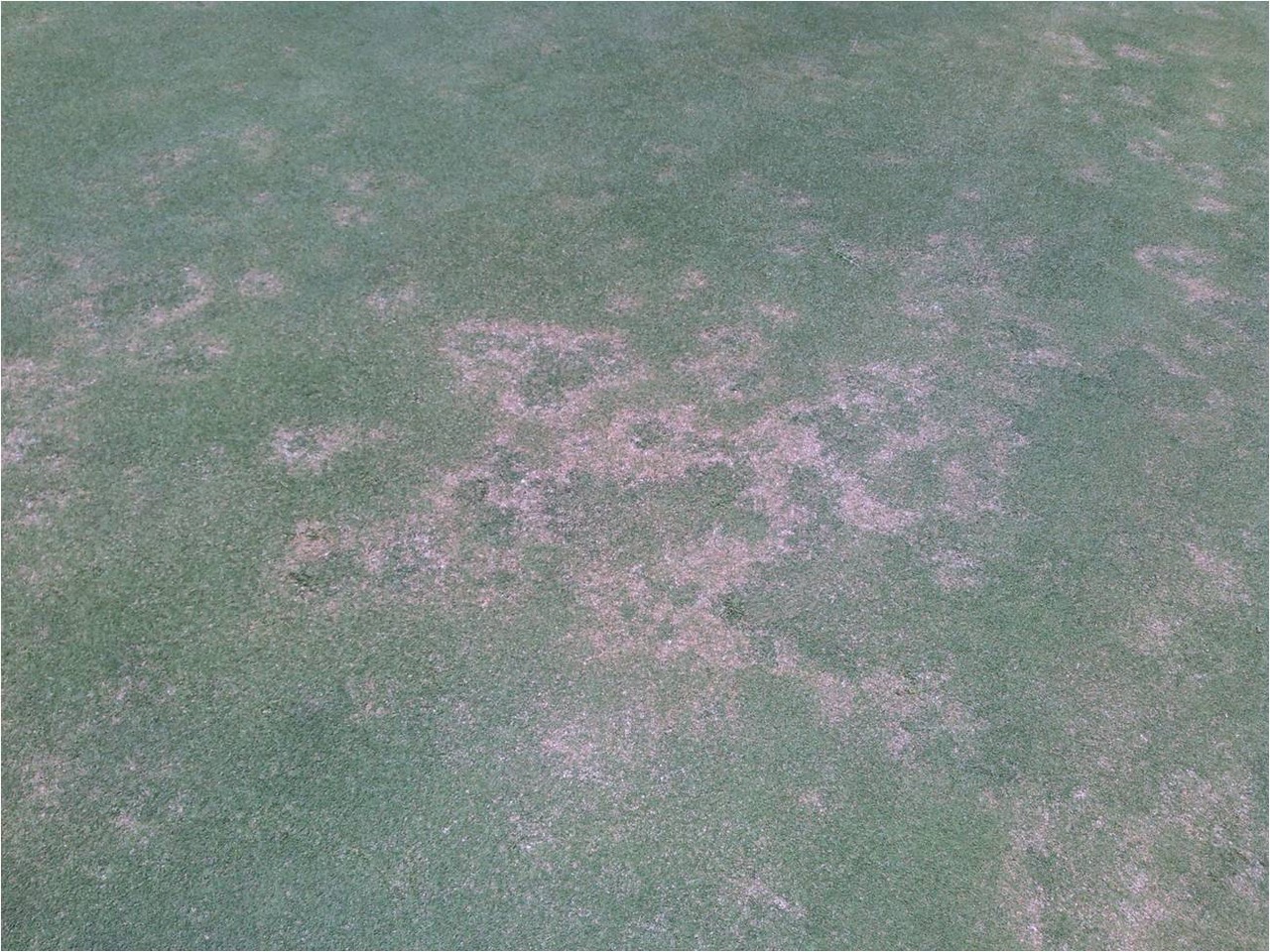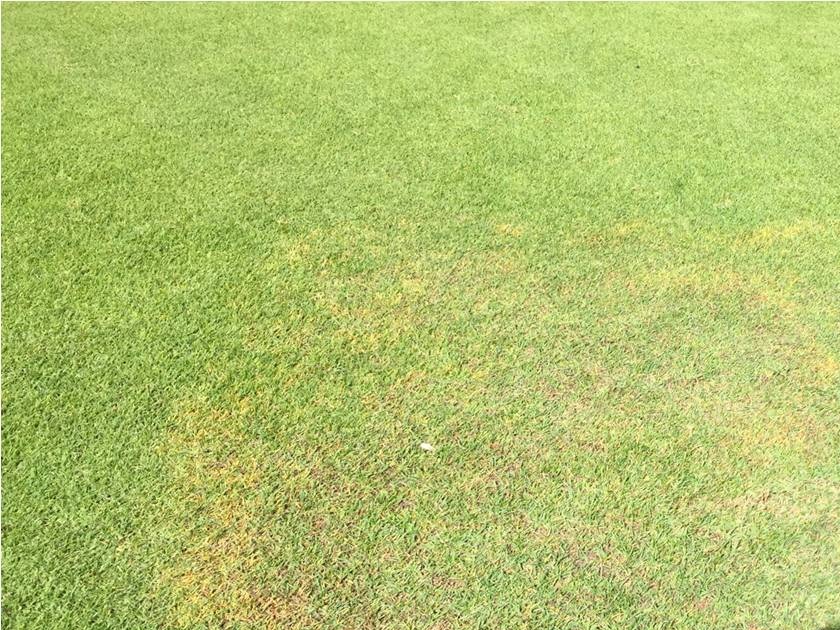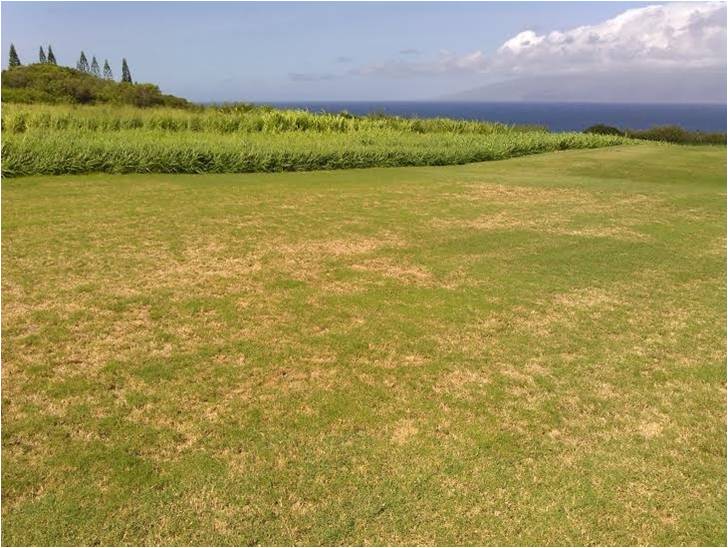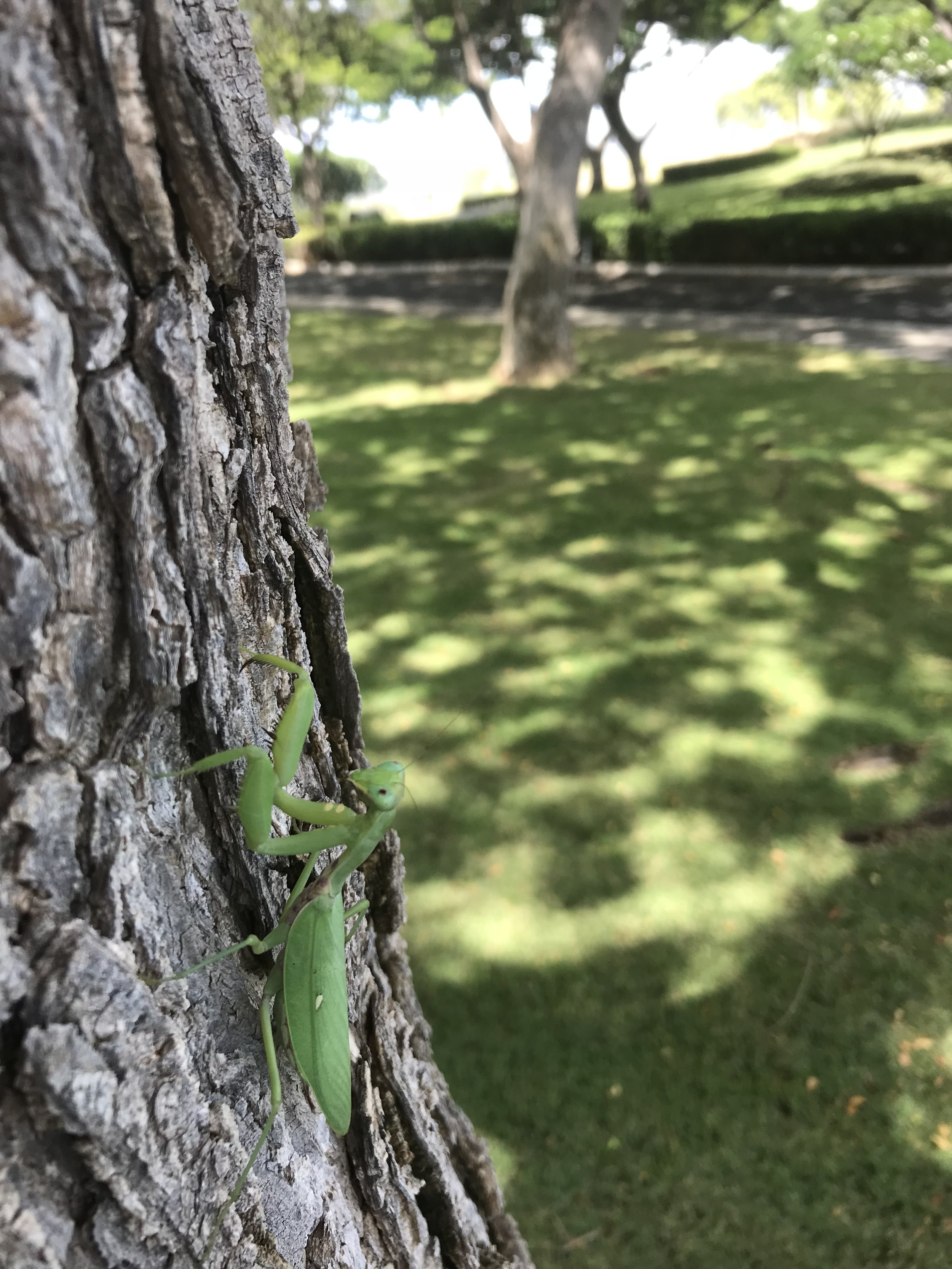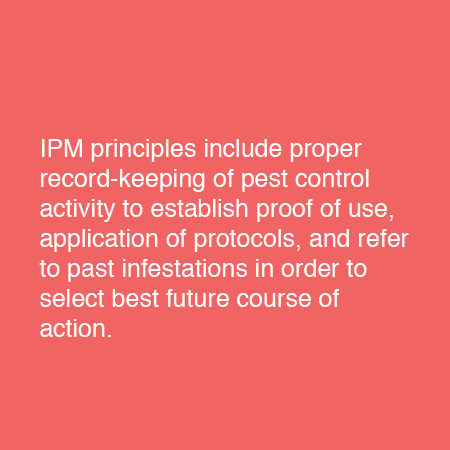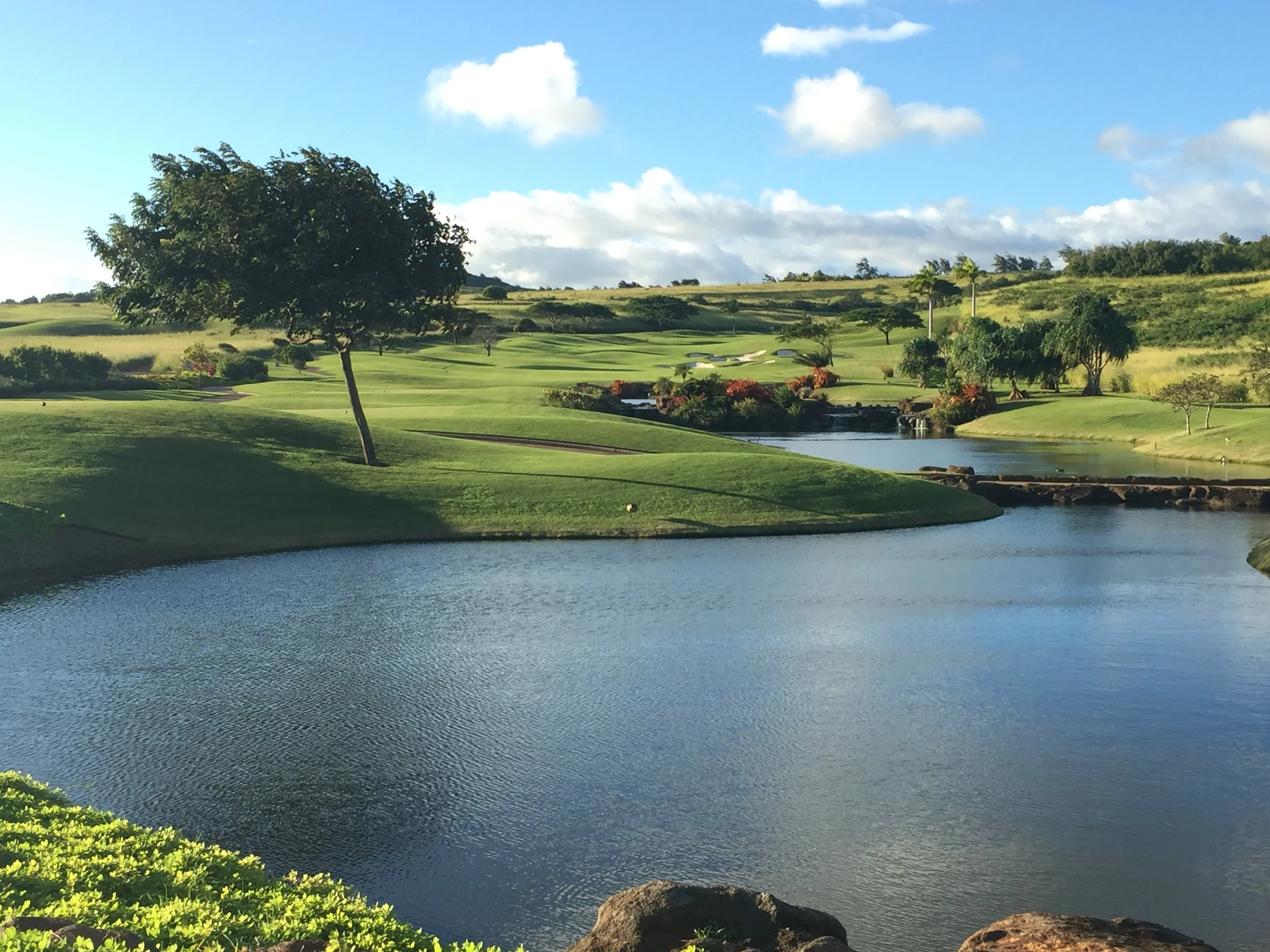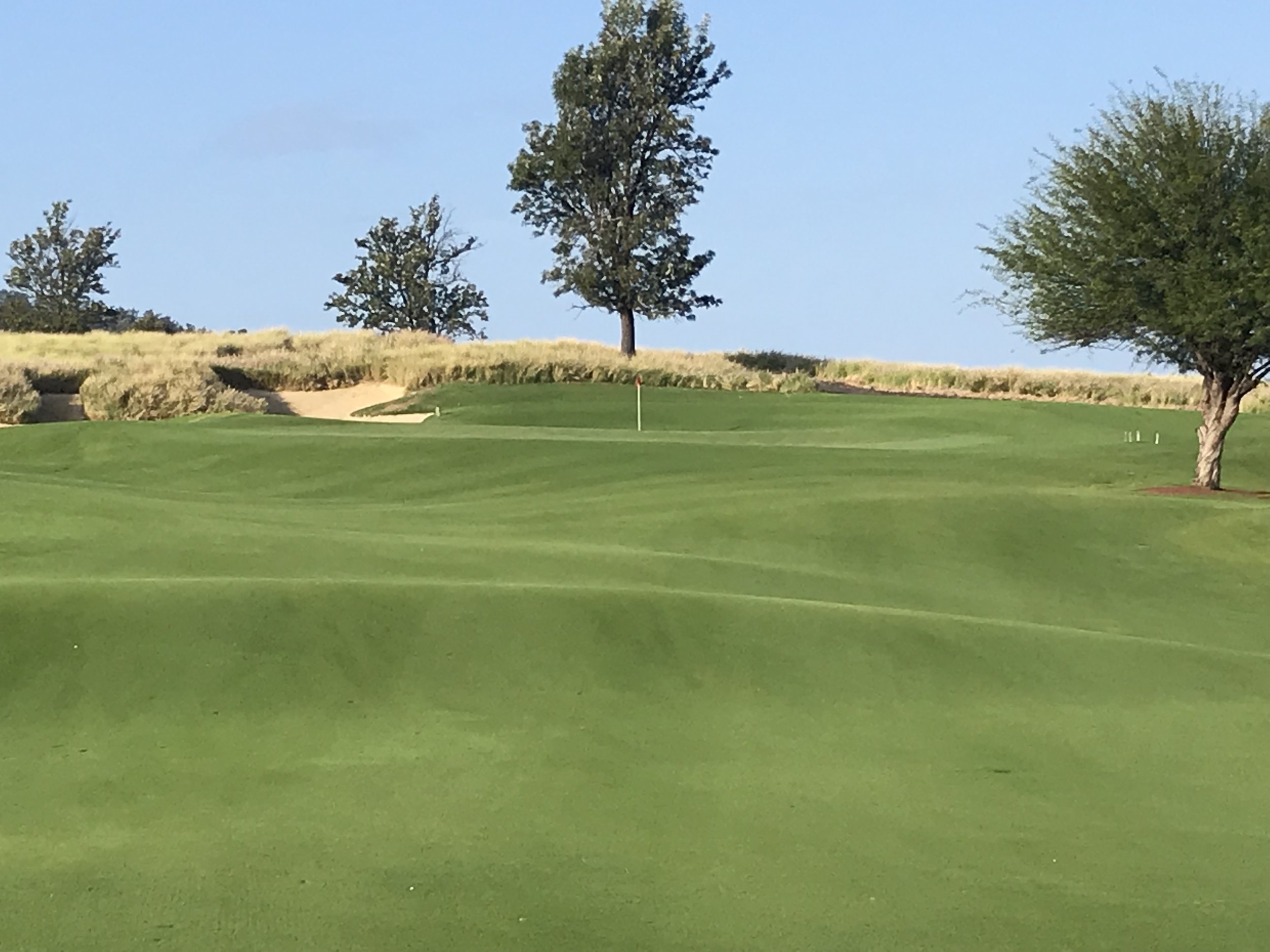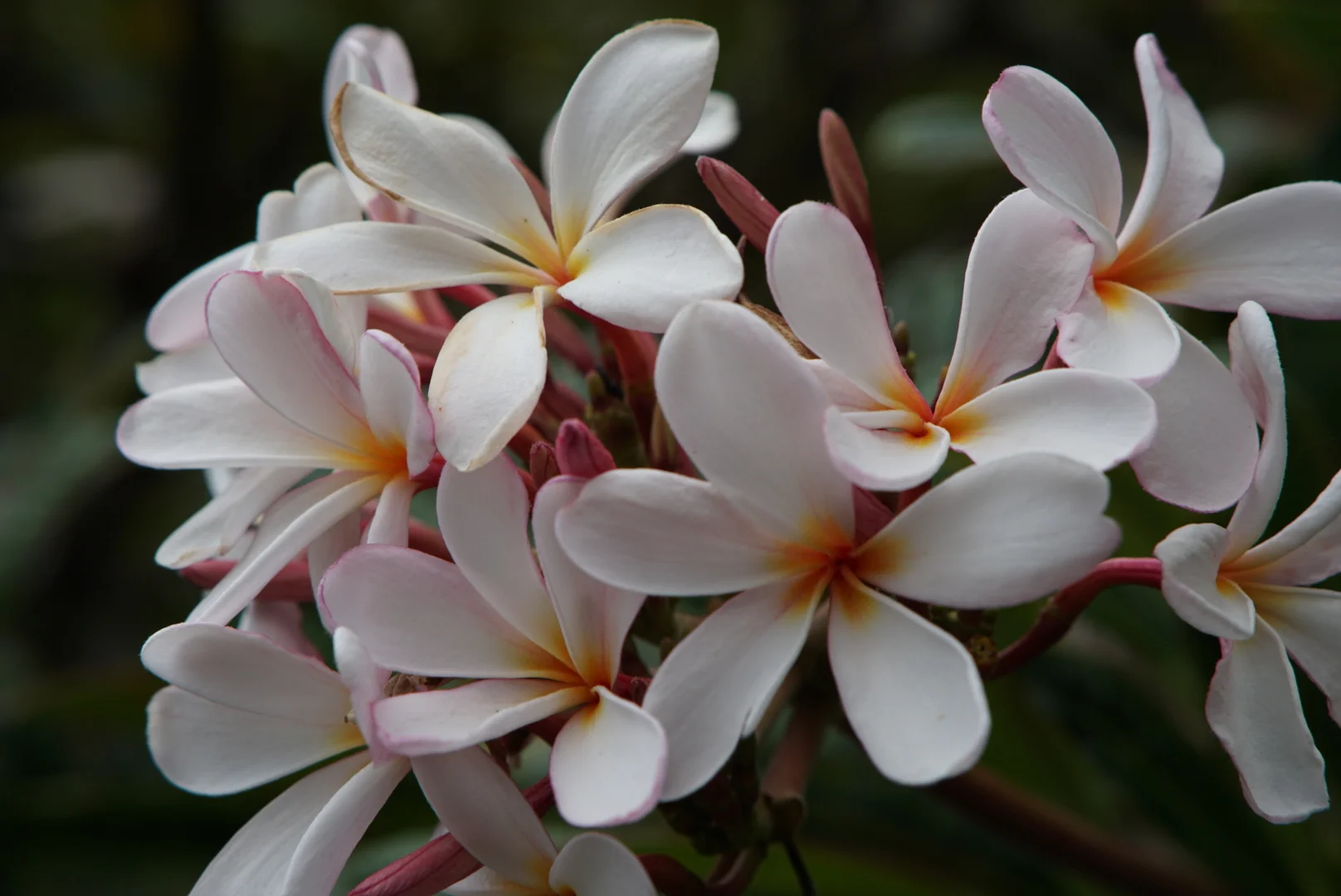9 - Integrated Pest Management

IPM aims to reduce conventional pesticide use, when feasible, by using a combination of tactics to control pests, including cultural, biological, genetic, and chemical controls.
The basis of an environmentally sound pest control program is a process called Integrated Pest Management (IPM). Objectives include reducing pest management expenses, conserving energy, and reducing the risk of pesticide exposure to people, animals, and the environment.
Pest management on golf courses requires significant time, labor, and financial resources. Golf course superintendents must understand what IPM is and how to implement it for each pest group, including arthropods, nematodes, diseases, and weeds. Superintendents must be well-versed in pest identification, lifecycles and/or conditions that favor pests, and all possible methods of pest control.
IPM PLAN & MONITORING
IPM on golf courses focuses on identifying pests, choosing pest-resistant varieties of grasses and other plants, enhancing habitat for natural pest predators, scouting to determine pest populations and acceptable thresholds, and applying biological and other potentially less toxic alternatives whenever possible. Chemical controls should have minimal effect on beneficial organisms and the environment; controls should also minimize development of pesticide resistance. A diagram summarizing key components of a typical turf IPM program is provided below (Cheng, 2013).
Graph 1. Key components of a typical turf IPM program (Cheng, 2013)
Written Plan
IPM includes biological controls, mechanical or cultural methods, chemical controls, pest monitoring, and other applicable practices. A written IPM plan should be established to provide guidance and align crew members. A pest-control strategy should only be used when the pest is causing, or is expected to cause, more damage than what can be reasonably and economically tolerated. A control strategy should reduce pest numbers to an acceptable level, while minimizing harm to non-targeted organisms and the environment. Pesticide selection should be based on effectiveness, potential toxicity to non-target species, cost, and site characteristics, as well as solubility and persistence.
Pest Thresholds & Scouting
IPM is generally more challenging on golf courses than in an agricultural setting where economic thresholds for key pests have been determined and pest levels exceeding the site’s thresholds warrant treatment. The golf industry is sensitive to aesthetic damage, and golfers can be intolerant of anything that could affect the appearance of turfgrass or ornamental plants. Educating golfers and maintenance personnel can raise tolerance of minor aesthetic damage without compromising plant health, play, and aesthetics. Available pest thresholds can help guide application decisions and associated education, while minimizing economic and environmental costs.
Include “scouting” locations and steps for all areas of the course in the IPM written plan. Scout to identify populations, pest damage, determine acceptable thresholds, and what control strategies are necessary. Scouting methods include visual inspection, soil sampling, soap flushes, and insect trapping. Record scouting results to develop historical information, document patterns of pest activity, and note successes and failures. Use this information when making similar future decisions.
Monitoring
Monitor, observe, and document the presence and development of pests regularly (daily, weekly, or monthly, depending on the pests); note conditions that are conducive for outbreaks throughout the year. Note time of day, month, year, weather, and flowering stages of nearby plants. Map pest outbreak locations (including number of insects per unit area, disease patch size, and percent of area affected) to identify patterns and susceptible areas for future applications. Document with photos when possible. Problem areas might include the edges of fairways, shady sites, or poorly drained areas.
Personnel should be trained to determine the pest’s lifecycle and know which life stage to target. For example, for an insect pest - identify whether it is an egg, larva/nymph, pupa, or adult. Train personnel to document, identify, and record key pest activities on key plants. Signs of the pest may include mushrooms, animal damage, insect frass, or webbing. Symptoms of the pest may include chlorosis, dieback, growth reduction, defoliation, mounds, or tunnels. Staff should identify which corrective actions reduced or prevented pest populations and they should be trained to understand what actions are most economical, while minimizing risks.
PEST GROUPS
Insects
In the presence of a susceptible host and a conducive environment, certain insects can disrupt play by damaging and destroying turf, or by being a nuisance to golfers. Correctly identify the responsible insect pest(s). This often involves sending samples to diagnostic clinics. Entomologists and other specialists are available from HDOA and other extension agencies for assistance with pest identification. Turfgrass managers have multiple tactics and tools that can be used to control turf insect pests, including cultural and chemical practices.
Ensure proper cultural practices to reduce turfgrass stress are used. Healthy, well-managed turfgrass is more likely to resist insect problems and has better recuperative potential than stressed, unhealthy turf. Cultural factors that influence stress include organic layer management, fertility programs, water management, and mowing height selection. Correct any conditions that produce stressful environments for turf. (e.g., improve airflow and drainage, reduce or eliminate shade, etc.)
Insecticide use may be integrated into an overall management strategy. The appropriate (most effective) preventive insecticide can be applied to susceptible turfgrasses when unacceptable levels of insect damages are likely. Certain well-studied biological control agents (i.e., entomopathogenic nematodes, fungi, and bacteria) can be used against certain turf insect pests; application in Hawai’i is limited compared to the mainland.
Record and map insect outbreaks. Identify trends to help guide future treatments and focus on changing conditions within susceptible areas to reduce insect outbreaks.
Diseases
In the presence of a susceptible host and conducive environment, plant pathogens can disrupt play by damaging and destroying turf. Correctly identify the disease pathogen; this often involves sending samples to diagnostic clinics. Fungicide use should be integrated into an overall management strategy for a golf course. The appropriate (most effective) preventive fungicide can be applied to susceptible turfgrasses when unacceptable levels of disease are likely to occur.
No measure can completely eliminate the threat of turfgrass disease on a golf course. However, managers have multiple tactics and tools that can reduce the likelihood of disease. Cultural factors include organic layer management, fertility programs, water management, and mowing height selection. Correct the conditions that produce stressful turf environments (e.g., improve airflow and drainage, and reduce or eliminate shade). Healthy, well-managed turfgrass is less likely to develop disease given its better recuperative potential.
Preventively apply appropriate fungicides where diseases are likely to occur and when conditions favor disease outbreaks. Record and map disease outbreaks. Identify trends to guide future treatments and alter conditions in susceptible areas to reduce disease outbreaks. For lab diagnostic services in Hawai’i, contact the University of Hawai’i Agricultural Diagnostic Service Center: https://www.ctahr.Hawai’i.edu/site/ADSC.aspx
Weeds
People, animals, birds, wind, and water can distribute seeds which reproduce into weeds. Weeds also reproduce from root pieces and special vegetative reproductive organs such as tubers, corms, rhizomes, stolons, or bulbs. They compete with desired plants for space, water, light, and nutrients. They are hosts for pests such as plant pathogens, nematodes, and insects. Certain weeds also cause allergic reactions in humans.
Weed management is an integrated process where good cultural practices are used to encourage desirable turfgrass ground cover, and herbicides are intelligently selected and judiciously applied. A successful weed management program consists of:
Preventing weeds from being introduced into an area
Selecting appropriate turf species or cultivars adapted to prevalent environmental conditions to reduce weed encroachment that may lead to bare soils
Using proper turfgrass management and cultural practices to promote vigorous, competitive turf
Properly identifying weeds
Properly selecting and using appropriate herbicide, if necessary
Adopt or maintain cultural practices that protect turfgrass from environmental stresses such as shade, drought, and extreme temperatures in order to prevent weed encroachment. Proper turf management practices include correct and appropriate use of fertilizers and chemicals, proper mowing height and frequency, proper soil aeration, and regulated traffic to reduce physical damage and compaction. Avoid scalping; it reduces turf density, increasing weed establishment. Use weed-free materials for topdressing. Proper fertilization helps resist diseases, weeds, and insects; it is essential for turfgrasses to sustain desirable color, growth density, and vigor.
Record and map weed infestations to help identify site specific issues for preventative actions. Address damage from turfgrass pests such as diseases, insects, nematodes, and animals to prevent density/canopy loss to broadleaf weeds.
Nematodes
Plant-parasitic nematodes adversely affect turfgrass health. These microscopic roundworms (unsegmented), usually between 0.0156 and 0.125 inch (0.25 and 3 mm) in length, are difficult to control. Nematodes debilitate the root system of susceptible turfgrasses. The roots under nematode attack may be very short, with few, if any, root hairs, or appear dark and rotten.
Plant-parasitic nematodes cause turf to be less efficient at water and nutrient uptake from the soil and make it much more susceptible to environmental stresses. Weakened turf favors pest infestation and especially troublesome weeds that necessitate herbicide applications. Turfgrasses begin showing signs of nematode injury as they experience stresses, including drought, high temperatures, low temperatures, and wear. Over time, turf in affected areas thins out or may die. Recommended practices when nematode activity is suspected:
Assay the soil and turfgrass roots to determine extent of the problem
Only apply nematicide on golf course turf based on assay results
Divert traffic from areas stressed by insects, nematodes, diseases, or weeds
Increase mowing height to reduce plant stress associated with nematodes (in addition to root-feeding insects, disease outbreaks, or peak weed-seed germination)
Reduce or eliminate other biotic/abiotic stresses
Beneficial Insects
CONTROL METHODS
Turfgrass Selection & Maintenance
Selecting pest-resistant cultivars or plant species can potentially lead to reduced pesticide usage. A species grown outside of its zone of adaptation is typically more prone to pest problems. Species and cultivars should be managed under conditions similar to the intended use. (e.g., not exceeding mowing height limitations that a grass was bred or selected for.)
Avoid use of turfgrass in heavily shaded areas and select shade-adapted grasses for areas receiving partial sun or shade. Reduce traffic in shaded areas to protect turfgrasses and trees from injury and soil compaction, if practical. Minimize moisture stress and leaf wetness. Reduce pest and disease pressures by correcting dead spots and air-circulation issues by pruning understory and adjusting irrigation scheduling. Mechanical control methods such as vacuuming, hand pulling weeds, and extracting pests work best when populations are low.
Educate builders, developers, golf course and landscape architects, sod producers, golfers and others on which plants are best suited to your area within Hawai’i. Turfgrasses must be scientifically selected for the eco-region of the golf course, resulting in minimized irrigation requirements, fertilization needs, and pesticide use. Reference Planning, Design, and Construction section for common Hawai’i turfgrasses.
Beneficial Insect
Biological Controls
The biological component of IPM involves the release and/or conservation of biological control agents, such as predators, parasites, and pathogens. Hawai’i regulations do not allow the importation of beneficial insects due to quarantine restrictions, so they must be sourced, collected, transported, and released by a local beneficial insects expert. Entomologists at the University of Hawai’i can provide informational resources.
Areas on the golf course can be modified to better support natural predators and beneficial organisms. This natural control can have immediate and long-term impacts including reduced pesticide use, improved native plant growth, lower energy use, water and cost reductions.
When feasible, avoid applying pesticides to roughs, driving ranges, or other low-use areas to provide a refuge for beneficial organisms. Targeted areas for biological controls should attract natural predators and protect them from pesticide applications. Plant insectary plants that provide pollen or nectar sources. Regularly monitor to spot outbreaks and transfer beneficial insects into the area needed.
Conventional Pesticides
IPM involves prevention and suppression to reduce pest numbers or damage to an acceptable level. A pest-control strategy using pesticides should be used only when the pest is causing, or is expected to cause, more damage than what can be reasonably and economically tolerated. If possible, rotate chemicals and modes of action if chemical controls are used to reduce resistance in pests.
Pesticides are designed to control or alter behavior of pests. Pesticides should be evaluated on effectiveness against the pest, mode of action, life stage of the pest, personnel hazards, non-target effects, potential off-site movement, and cost. A control strategy should reduce pest numbers to an acceptable level, while minimizing harm to non-targeted organisms.
Always follow label instructions; state and federal pesticide laws require it. These directions have been developed after extensive research and field studies on the chemistry, biological effects, and environmental fate of the pesticide.
Train employees on proper pest identification and pesticide selection techniques. Choose the product most appropriate for the pest and mix only the quantity of pesticide needed in order to avoid disposal problems, protect non-target organisms, and reduce costs. Spot-treat pests whenever appropriate. Rotate pesticide modes-of-action to reduce likelihood of resistance.
Note environmental hazards and groundwater advisories included on labels. Follow guidelines provided by the Fungicide Resistance Action Committee, Herbicide Resistance Action Committee, and Insecticide Resistance Action Committee. The Hawai’i Department of Agriculture (HDOA) Pesticides Branch Education Section may be contacted for more information about IPM or other pesticide concerns.
RECORD KEEPING
Record pesticide applications, along with results of scouting, to develop historical information, document patterns of pest activity, and note successes and failures. Record-keeping is required to comply with the federal Superfund Amendments and Reauthorization Act (SARA, Title III). Certain pesticides are also classified as RUP, record-keeping requirements apply per Hawai’i legislation.
IPM Record Keeping





